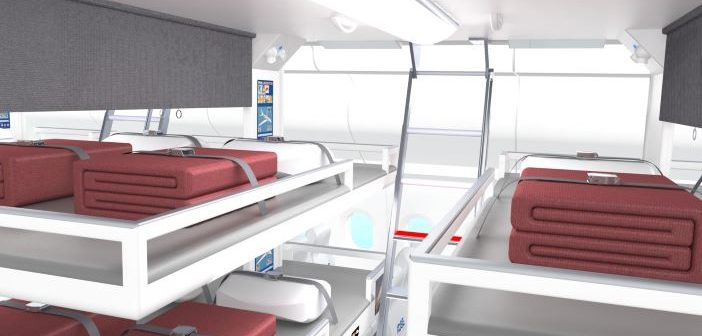The Resurgence of In-Flight Bunks: A Game-Changer for Ultra-Long-Haul Flights?

Airline cabins are experiencing a nostalgic revival as bunks, reminiscent of the golden era of aviation, make a comeback. In a world where ultra-long-haul flights are the new norm, the demand for comfort and the need to stretch out during extended journeys has never been greater. This article explores the possibility of reintroducing in-flight bunks and the potential impact on the airline industry.
The New Era of Ultra-Long-Haul Flights
With Russian airspace no longer accessible, some major flight routes, like East Asia to Europe or China to the East Coast of North America, have seen flight times extend to 15-17 hours. This shift is likely to persist, and rising fuel costs may lead to higher fares, prompting passengers to demand greater comfort for their investment.
Daniel Baron of LIFT Aero Design suggests that if passengers are paying premium fares for economy class, they may expect more, potentially giving rise to a new class or product – in-flight bunks. Once travelers experience flat sleeping options, they may find it hard to return to traditional seating.
Philippine Airlines’ Boeing 747-200B, which offered proper bunks in the early 1980s, serves as an example of the golden age of in-flight sleeping accommodations. First-class passengers could leave their reclining armchairs and ascend to upper, lower, or side bunks on the plane’s small top deck.
While bunks seem attractive for long-haul-focused airlines, certifying them according to modern 16G requirements poses challenges. Accessibility and egress, as well as the concept of operations, need careful consideration. Questions arise regarding who the bunks are for, how they should be used, and what passengers are willing to pay for them.
Daytime Flight Considerations
For segments that mainly occur during the daytime, there’s a concern about the demand for beds versus passengers who prefer a lounge or upright position for various activities, including work, reading, and dining.
Air New Zealand had been working on its Economy Skynest, a three-tier, six-bunk system, but updates on its development remain pending. The airline’s B787-9 and forthcoming B787-10 fleets could potentially accommodate Skynest if certification and other challenges are overcome.
The potential market for bunks varies based on the class of service. In first and business classes, fully flat seats with direct aisle access and privacy doors are common, making bunks less appealing. Economy passengers, on the other hand, may have a stronger desire for bunks due to increasingly cramped seating.
Bunk operations must account for passengers’ needs during long flights, including stretching, restroom visits, dining, sleeping, and entertainment. Key questions involve seat assignments, booking procedures, meal service, and whether passengers can switch between seats and bunks.
Safety Certification Challenges
Safety certification is a significant concern when introducing bunks on aircraft. It’s unlikely that bunks can be certified for occupancy during the entire flight, particularly for takeoff and landing. Egress, especially for upper bunks, presents risks. Accessibility for disabled travelers and considerations of personal safety, social factors, gender, religious observance, and other individual attributes must also be addressed.
In-flight bunks could represent a potential game-changer for ultra-long-haul flights, offering passengers greater comfort and rest during extended journeys. However, certification, operational challenges, and passenger preferences present significant hurdles. The concept of in-flight bunks holds promise but requires careful consideration and innovation to become a practical reality in the modern aviation landscape.
